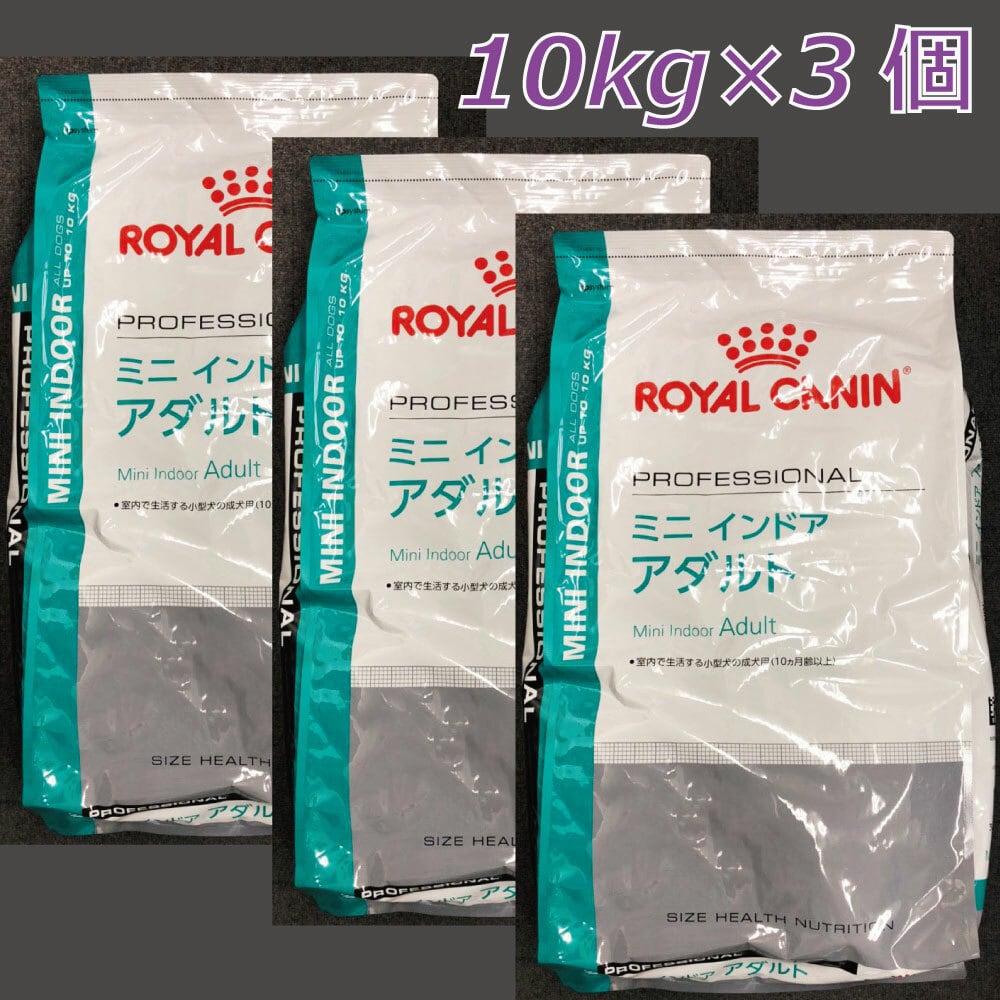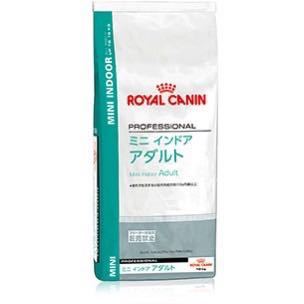ロイヤルカナンミニインドアアダルト10キロ
(税込) 送料込み
商品の説明
ロイヤルカナン ミニインドアアダルト10キロ業務用パッケージです。
数量指定も承っておりますのでお気軽にお申し付けくださいませ♪
掲載されていない商品でも販売可能なものがございますのでお気軽にお申し付けくださいませ。
ーーー注意事項ーーー
こちら以外でも販売をしているため注文時に欠品となる場合がございますので余裕を持ってご注文お願いいたします。
土日祝を挟むご注文は発送までに少々お時間がかかる場合がございますので予めご了承くださいませ
商品はご注文いただいた際に一番最新のものを発送いたします。
賞味期限 24/4以降
最新のものを発送いたしますので記載している期限より新しいものが届く場合もございます。
ーーー商品説明ーーー
健康的な消化と良質な便の状態を維持
消化性の非常に高いタンパク質(L.I.P.*)と適切な食物繊維に加え、高品質な炭水化物が健康的な消化を維持し、糞便の量と臭いを軽減します。 *L.I.P. : 消化率90%以上の超高消化性タンパク(ロイヤルカナン調べ)
理想的な体重を維持
室内で生活する小型犬の、低いエネルギー要求量に合わせたカロリー調整が、理想的な体重の維持をサポートします。
L-カルニチンを配合
美しく健康な被毛を維持
美しく健康な被毛を維持するために、EPA・DHAを含む栄養素をバランス良く配合しました。商品の情報
| カテゴリー | その他 > ペット用品 > ペットフード |
|---|---|
| 商品の状態 | 新品、未使用 |

ロイヤルカナン ミニインドアアダルト10キロ | Petfood Market

【低価超歓迎】 ロイヤルカナン ミニインドア アダルト10kg gwAFY-m95595382869

ロイヤルカナン ミニインドアアダルト ドッグフード☆10キロ ロイヤル

□ロイヤルカナン ミニインドアアダルト(生後10カ月齢以上) Pets-first

ロイヤルカナン ミニ インドア アダルト 成犬用 4kg 3182550849647

ロイヤルカナン SHN ミニ インドア アダルト(成犬用)|みんなの

ロイヤルカナン☆ミニインドアアダルト☆10キロを2つお得セット-

ロイヤルカナン SHN ミニ インドア アダルト 10kg×3個入り | Petfood

SALE/97%OFF】 ロイヤルカナン ミニインドアアダルト 10kg 小型犬

ロイヤルカナン ミニインドアアダルト 10kg|PayPayフリマ

ミニ インドア アダルト(室内で生活する小型犬専用フード 成犬用

全国総量無料で ロイヤルカナンミニインドアアダルト10キロ ペット

ロイヤルカナン SHN ミニ インドア アダルト 10kg×2個入り | Petfood

ロイヤルカナン☆ミニインドアアダルト☆10キロ☆正規品プレミアム

ヤフオク! -「ロイヤルカナン インドア 10kg」の落札相場・落札価格

ROYAL CANIN - ロイヤルカナン ミニインドア アダルト(10kg)の

□ロイヤルカナン ミニインドアアダルト(生後10カ月齢以上) Pets-first

楽天市場】ロイヤルカナン ミニインドアアダルトの通販

ヤフオク! -「ロイヤルカナン インドア 10kg」の落札相場・落札価格

ロイヤルカナン ミニインドアアダルト10kg 室内で生活する小型犬の成犬

ロイヤルカナン ミニインドアアダルト 10kg 小型犬 早割クーポン

注目の福袋! ロイヤルカナン ミニインドアアダルト 10キロ ペット

ロイヤルカナン ミニインドアアダルト10キロ | Petfood Market

ROYAL CANIN - ロイヤルカナン ミニインドア アダルト(10kg)の通販 by

ロイヤルカナン ミニインドアアダルト 10ヶ月以上 2キロ×4 高評価な

楽天市場】\ ポイント2倍 / 【賞味期限:2024/12/16】[ あす楽 正規品

いラインアップ ロイヤルカナン ミニインドアアダルト10kg ペット

ロイヤルカナン ミニインドアアダルト10キロ | Petfood Market

93%以上節約 ミニインドアアダルト 10キロ ad-naturam.fr

www.haoming.jp - ロイヤルカナン ミニインドアアダルト ドッグフード

Amazon | ロイヤルカナン LHN ミニインドア アダルト 2kg | ロイヤル

タイムセール ロイヤルカナン ミニインドアアダルト 10キロ

カテゴリ ROYAL ミニインドアアダルト 10kg×2個の通販 by やまさん's

ROYAL CANIN - ロイヤルカナン ミニインドアアダルト 10kgの通販 by

ロイヤルカナン 超小型小型の室内犬用 生後10カ月頃の切り替えセット

新年の贈り物 ロイヤルカナン ミニインドアアダルト 2キロ 成犬 室内

ロイヤルカナン ミニ インドア アダルト 10㎏-

ロイヤルカナン ミニインドアアダルト10キロ | Petfood Market

楽天市場】【正規品】 ロイヤルカナン ミニ インドア パピー (室内で

ロイヤルカナン ミニインドアアダルト 10kg 小型犬 早割クーポン




商品の情報
メルカリ安心への取り組み
お金は事務局に支払われ、評価後に振り込まれます
出品者
スピード発送
この出品者は平均24時間以内に発送しています














